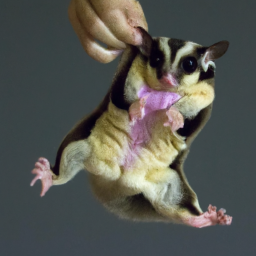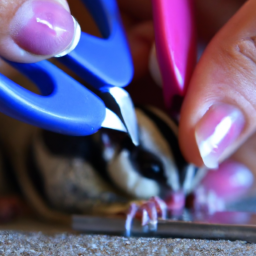Sugar Glider Pregnancy Timeline
Hi there! In this article, we’ll be discussing the pregnancy timeline of sugar gliders. You’ll learn about how long they carry their joeys, when they mate, and the stages of their pregnancy. This will give you a better understanding of what to expect if you have a sugar glider as a pet, or if you’re simply curious about their reproductive journey. So, let’s get started and explore the fascinating world of sugar glider pregnancy!
Sugar Glider Pregnancy Timeline
Introduction
Welcome to the fascinating world of sugar glider pregnancy! In this article, we will take you through the different stages of a sugar glider’s pregnancy journey. From the moment of mating to the birth of adorable joeys, you will discover the wonders and intricacies of this unique timeline.
Stage 1: Mating
Behavior and signs of mating
Mating in sugar gliders usually occurs during their breeding season, which can vary depending on their geographical location. During this time, male sugar gliders engage in a process called “tail wagging,” where they wag their tails to attract females. This behavior is accompanied by vocalizations and scent marking to further entice potential mates.
When a female sugar glider is ready to mate, she will respond to the male’s advances by joining him in his nest or choosing a suitable location. They will then engage in an intense mating ritual that can last several minutes. It is a thrilling sight to witness as the male sugar glider repeatedly mounts the female, completing the process of fertilization.
Duration of mating process
The mating process in sugar gliders is relatively quick, lasting only a few minutes. However, it is important to note that a female sugar glider can store sperm for several months, allowing her to delay fertilization until the optimal conditions for nurturing her young arise.
Stage 2: Fertilization
Implantation in the uterus
Once fertilization occurs, the female sugar glider’s body goes through a series of changes to prepare for the arrival of her joeys. The fertilized eggs, or zygotes, begin their journey by implanting themselves into the lining of the uterus. This process triggers the start of gestation.
Formation of blastocyst
After implantation, the zygotes develop into blastocysts, forming hollow structures with an outer layer of cells that will eventually give rise to the placenta. These blastocysts then continue to grow and develop within the protective environment of the mother’s uterus.
Stage 3: Gestation
Development of the embryo
During gestation, the blastocysts develop further, transforming into tiny embryos. Over the course of about 15 to 17 days, the embryos undergo crucial developments, such as the formation of their limbs, organs, and distinct facial features. These delicate creatures are incredibly resilient, and even at this early stage, they resemble miniature sugar gliders.
Changes in the mother’s body
As the embryos grow and develop, the mother sugar glider experiences physiological changes to accommodate their needs. Her body adjusts to support the developing joeys, including an increase in blood volume and the expansion of her uterus. This remarkable adaptation ensures proper nourishment and protection for her offspring throughout their journey to birth.
Stage 4: Nurturing the Embryo
Formation of placenta
Around day 25 to 28 of the pregnancy, the embryos develop a vital organ known as the placenta. The placenta establishes a connection between the mother and her growing joeys, providing them with essential nutrients and oxygen. This incredible organ also acts as a barrier, protecting the developing joeys from harmful substances while still allowing the exchange of vital molecules.
Nutritional requirements
During this stage, proper nutrition is crucial for the health and well-being of both the mother sugar glider and her developing joeys. A balanced diet that includes a variety of fruits, vegetables, proteins, and calcium-rich foods is essential to support the demands of pregnancy and ensure optimal growth for the joeys.
Stage 5: Pouch Life
Embryos moving to the pouch
Around day 40 to 45, the fully-formed, but still very small, joeys crawl from the mother’s uterus to her pouch. This journey is an incredible feat, as the joeys navigate their way through the mother’s fur to find the opening of the pouch. Once inside, they attach themselves to one of the mother’s four nipples, where they will spend the next few months growing and developing.
Growth and development in the pouch
Inside the pouch, the joeys undergo rapid growth and development. They cling to their mother’s nipple, feeding on her highly nutritious milk, which provides them with all the essential nutrients they need to thrive. The mother sugar glider diligently cares for her joeys, grooming them and ensuring their safety and warmth in the cozy confines of the pouch.
Stage 6: Leaving the Pouch
Emerging from the pouch
Around 70 to 80 days after birth, the joeys start to venture out of the pouch, exploring the world outside while still intermittently returning to their mother for comfort and nourishment. This is an exciting time as the joeys become more independent and begin to develop their own personalities.
Start of independent exploration
As the joeys gain confidence, they gradually spend more time outside the pouch, engaging in playful activities and honing their climbing and gliding skills. During this stage, their interactions with their mother and other sugar gliders in their group play a crucial role in their social development and learning.
Stage 7: Weaning
Gradual introduction to solid food
Between 110 to 120 days after birth, the joeys start to rely less on their mother’s milk and gradually transition to a diet of solid food. The mother sugar glider will introduce them to various fruits, vegetables, nectar, and even insects, allowing them to explore different tastes and textures.
Transition from milk to solid diet
Over the course of a few weeks, the joeys become proficient at feeding themselves and will eventually wean off their mother’s milk completely. This marks the beginning of their self-sufficiency and prepares them for the next stage of their lives as young adults.
Stage 8: Young Adulthood
Physical and behavioral changes
As the joeys enter young adulthood, they undergo important physical and behavioral changes. Their fur becomes fully developed, and their bodies reach their adult size. They become sexually mature, ready to embark on their own reproductive journeys.
Reproductive maturity
Around 8 to 12 months of age, sugar gliders reach reproductive maturity. This signals the beginning of their own pregnancy timelines and perpetuates the cycle of life for future generations of sugar gliders.
How Can Stress from an Escape Affect a Sugar Glider’s Pregnancy Timeline?
The stress from a sugar glider escape plan can significantly impact the pregnancy timeline. If a sugar glider feels threatened or unsafe, it can lead to delayed pregnancies or even miscarriages. It’s important to provide a secure and calm environment for these small marsupials during this crucial time.
Conclusion
The sugar glider pregnancy timeline is a remarkable journey filled with unique milestones and adaptations. From the initial stages of mating and fertilization to the nurturing of the embryos and the eventual birth of joeys, each step in this process showcases the strength, resilience, and maternal instinct of sugar gliders. Witnessing this incredible timeline firsthand is a testament to the wonders of nature and the beauty of life.




